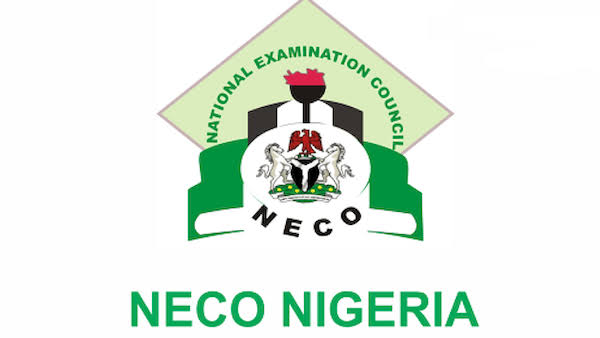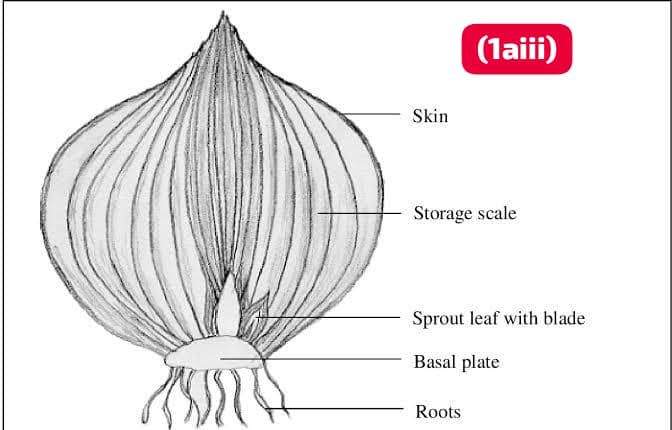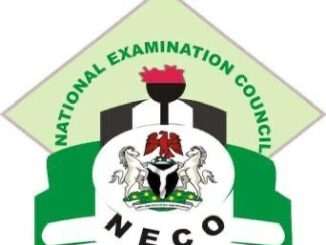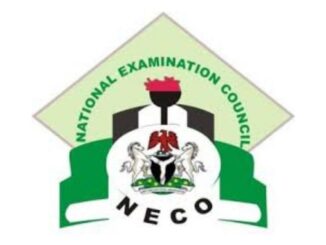
2024 NECO BIOLOGY PRACTICAL ANSWERS;-ExamgrandComNg
NUMBER ONE
(1ai)
Specimen A – onion (bulb)
Specimen B – Ginger (Rhizome)
Specimen C – Irish potato (tuber)
Specimen D – Potted bean seedlings (A week old)
Specimen E – Maize grain
(1aii)
Specimen A – By bulbs
Specimen B – By Rhizomes
Specimen C – By tubers
(1aiii)
Check the diagram below

(1aiv)
Specimen D – Epigeal germination
Specimen E – Hypogeal germination
(1av)
-Specimen D-
(PICK ANY TWO)
(i) The cotyledons are brought above the ground during germination.
(ii) The hypocotyl elongates and arches, forming a hook.
(iii) The hook grows upward until it reaches the surface of the soil.
(iv) The cotyledons then spread out and become the first leaves of the plant.
-Specimen E –
(PICK ANY TWO)
(i) The cotyledons remain below the ground during germination.
(ii) The epicotyl elongates and arches, forming a hook.
(iii) The hook grows upward until it reaches the surface of the soil.
(iv) The cotyledons then spread out and become the first leaves of the plant.
(1avi)
Specimen D – Tap root system
Specimen E – Adventitious root system
(1avii)
Specimen D – Pinnate venation
Specimen E – Parallel venation
(1aviii)
Specimen A – scales
Specimen B – Rhizome
Specimen C – Eyes
=================================
NUMBER TWO
(2a)
Specimen F – Pigeon’s head with neck
Specimen G – Atlas vertebra of a rabbit
Specimen H – Lumbar vertebra of a rabbit
Specimen I – Cactus plant
Specimen J – Water lettuce
(2aii)
(PICK ANY ONE)
(i) Protects the spinal cord
(ii) Provides a smooth surface for the skull to rotate on
(iii) Allows for the attachment of muscles that move the head
(iv) Helps to distribute weight evenly across the spine
(2aiii)
-Specimen G-
Located at the top of the spine, just below the skull
-Specimen H-
Located in the middle of the spine, between the thoracic vertebrae and the sacral vertebrae
(2aiv)
Occipital condyles of the skull
(2av)
Check the diagram below

(2avi)
Mammalia
(2avii)
-Specimen I-
(PICK ANY THREE)
(i) Thick, fleshy stem for water storage
(ii) Small, spine-like leaves to reduce water loss
(iii) Shallow, wide-spreading roots for water absorption
(iv) Thick, waxy coating on surface to reduce water loss
(v) Ability to store water in tissues for drought survival
-Specimen J-
(PICK ANY TWO)
(i) Large, flat surface area for sunlight and nutrient absorption
(ii) Long, trailing stem to reach water surface
(iii) Spongy, air-filled tissue for buoyancy
(iv) Small, hair-like roots for nutrient absorption
(v) Waxy coating on leaves to prevent water loss
======================
NUMBER THREE
(3ai)
Specimen K- Ripe Tomato Fruit
Specimen L- Ripe Oil Palm Fruit
Specimen M- Ripe Tridax Fruit
Specimen N- Ripe Mango Fruit
Specimen O- Ripe Delonix Regia Flower
(3aii)
Specimen K- Berry
Specimen L- Drupe
Specimen M- Cypsela
(3aiii)
Specimen K- Axile placentation
Specimen N- Axile placentation
(3aiv)
Specimen L- By water and animals
Specimen M- By wind
(3av)
(PICK ANY THREE)
(i) Light and dry achenes
(ii) Numerous achenes per inflorescence
(iii) Minute hooked hairs on fruits
(iv) Parachute or wing-like structures on achenes
(v) Small size and light weight
(3avi)
-Specimen K-
(PICK ANY TWO)
(i) Spherical or oblong shape
(ii) Smooth skin
(iii) Tender flesh
(iv) Small size (typically less than 10 cm)
(v) Red, yellow, or orange color
(vi) Axile placentation with numerous small seeds
(vii) Dispersed by wind
(viii) Consumed mainly fresh
-Specimen N-
(PICK ANY TWO)
(i) Elongated shape
(ii) Rough skin
(iii) Firm flesh
(iv) Large size (can exceed 20 cm)
(v) Green, red, or yellow color
(vi) Axile placentation with one or a few large seeds
(vii) Dispersed by animals (e.g., bats)
(viii) Can be consumed fresh, cooked, or processed into juice, jam, etc.
(3avii)







Be the first to comment